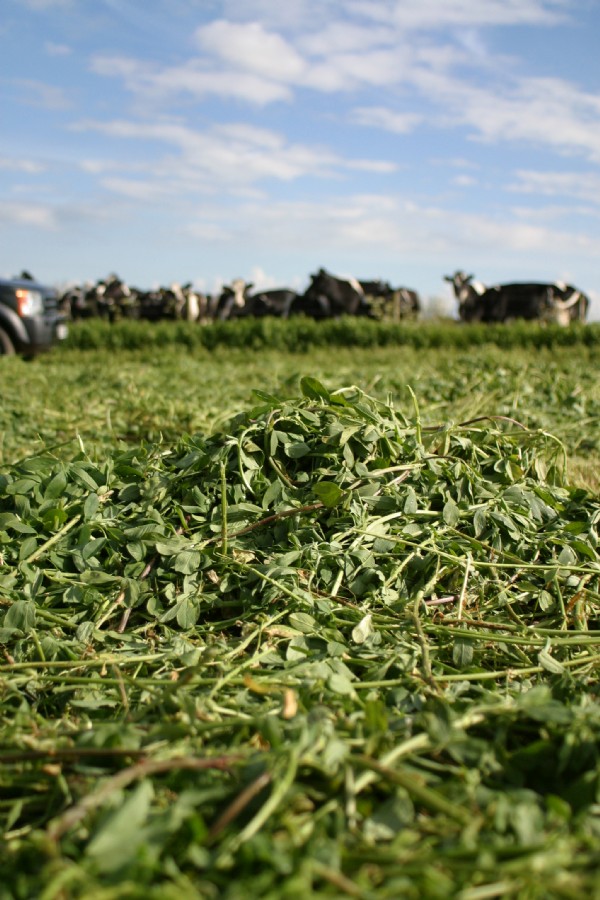

Lucerne, a legume that’s also known as Alfalfa, is highly productive and, without nitrogen fertiliser, it reliably provides three to four cuts of protein-rich silage annually, even through drought.
Most forage legumes are best grown in mixtures with grasses as this increases yield. However, Lucerne is different because it provides a high annual yield of around 14t DM per hectare on its own and without nitrogen fertiliser. It is also drought resistant - once established, the root structure is vast and deep. At 20% protein, lucerne is an attractive feed. It quickly passes out of the rumen, allowing a greater intake of forage than many other species.
It lasts for around five years and must be grown on naturally alkaline and free draining soils or gravel. It is estimated that one million acres of land are suitable in the UK. It is slower to establish than ryegrass and does require careful management but, if agronomic guidelines are followed, there is nothing complicated about it.
However Lucerne varietal choice can be confusing. This is mainly because Lucerne is not native to UK soil, and therefore picking the right cultivar is important to ensure it can survive and thrive in our climate. When deciding on a variety we usually refer to lucerne dormancy as a good judge of its suitability to a given climate.
Date Posted: 17th January 2018



